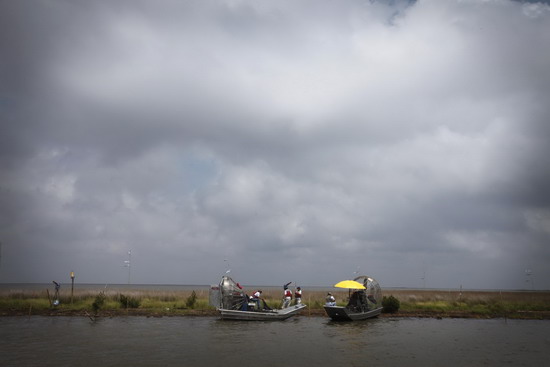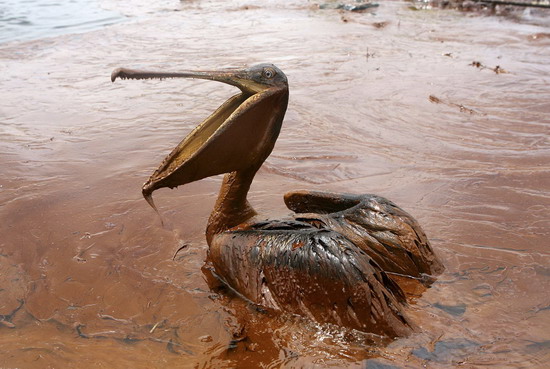highlights
Gulf gets taste of recovery one year after spill
(Agencies)
Updated: 2011-04-21 10:31
 |
Large Medium Small |
|
|
GRAND ISLE, Louisiana - A year after the worst US offshore oil spill swamped the Gulf coast with petroleum and misery, officials on Wednesday declared the hard-hit region reborn.
It is still too early to know the long-term damage to the Gulf's rich and complex ecosystem. But, so far, predictions made at the height of the spill of an impending environmental Armageddon appear well overstated.
"We're inviting America to come down here, have a great time, enjoy our seafood and be part of the greatest rebirth you will ever see," said Louisiana's Republican Governor Bobby Jindal at a ceremony to mark the event's anniversary.
An explosion aboard the Deepwater Horizon drilling rig on April 20, 2010, killed 11 workers and released nearly 5 million barrels of oil that fouled the shorelines of four Gulf Coast states.
Louisiana bore the brunt of the BP Plc spill's damage -- about 650 miles (1,050 km) of its coastline were oiled, versus 174 miles (280 km) in Florida, 159 miles (255 km) in Mississippi and 90 miles (144 km) in Alabama.
"By 10 am he had 75 speckled trout," Hood said.
Nearby, local TV chef Kevin Diez whipped up the region's signature seafood dish, shrimp etouffee, made with the famous Gulf crustacean.
The scene was a far cry from the early days of the spill when there were images of oiled pelicans and the undersea "spill cam" dominated the media. Then, environmentalists warned of the death of the Gulf Coast's fisheries and said that undersea currents threatened to carry the oil to the shores of the United Kingdom and beyond.
"The greatest environmental disaster with no end in sight!" a group called Seize BP, an advocacy group that gathered petitions to ask the federal government to seize BP's assets, said in a statement in May 2010. "Millions of gallons of oil gushing for months (and possibly years) to come. Jobs vanishing. Creatures dying."
To be sure, in places like Bay Jimmy and Barataria Bay, the oil lingers in the form of brownish, sometimes caramel-colored tar and there are dead or dying marsh grasses.
There are also perhaps millions of barrels of oil lingering beneath the ocean surface, according to federal government estimates. The effect of that oil on life in the sea are still largely unknown.
|
|
| 分享按钮 |





